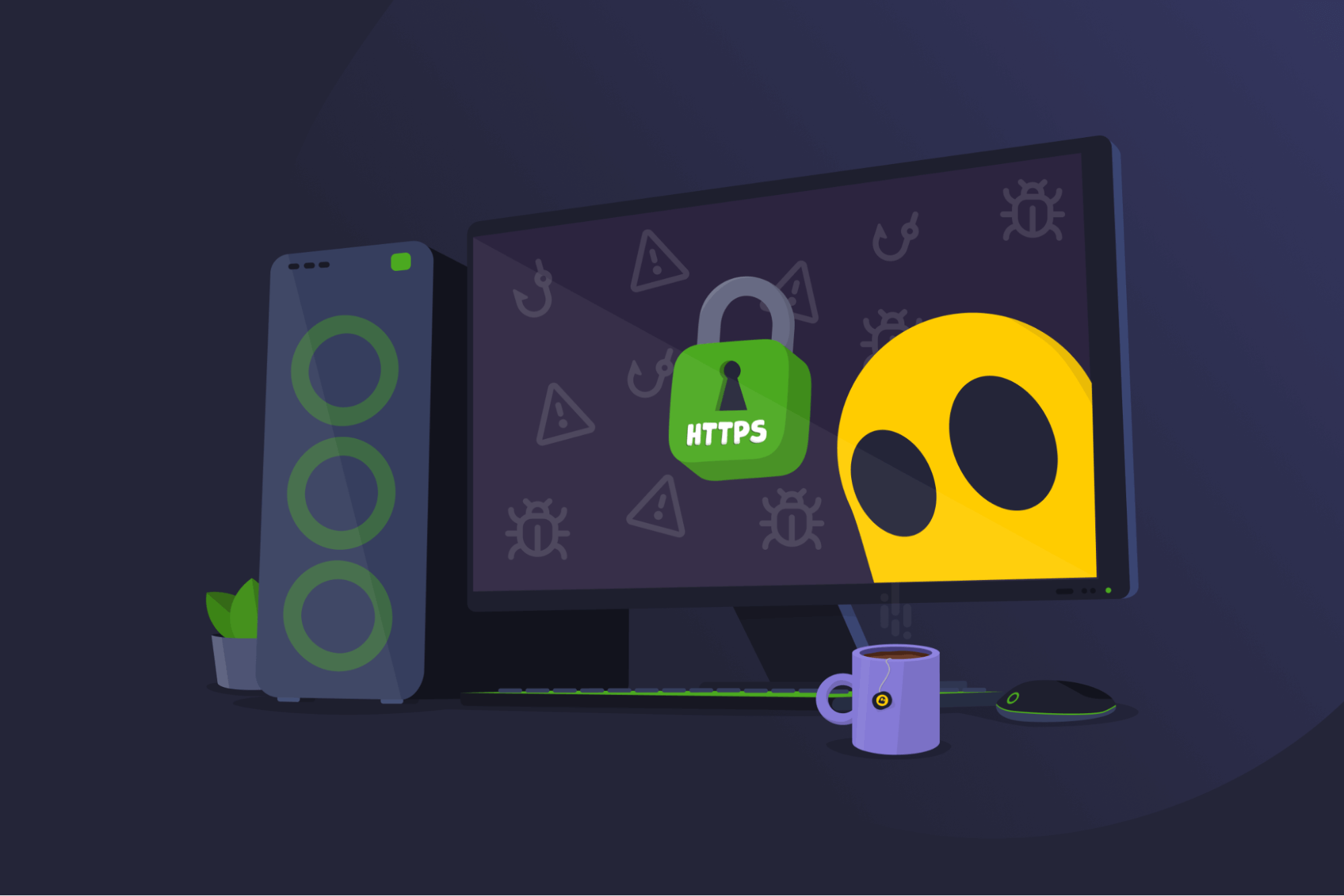Web Protection

Web Protection Definition
Web protection is a set of digital tools designed to improve online safety. It can block dangerous websites (like HTTPS phishing pages), prevent malware downloads, and protect against phishing attempts. It can also warn users before entering passwords on risky sites, or stop suspicious apps from installing themselves on a device. Many tools block ads and trackers as well, helping to improve browsing performance and privacy.
These protections can be built into web browsers, found on hardware, integrated into third-party services (like DNS proxies), or featured in security apps, such as VPNs. The goal of web protection is to reduce scams, malware, and data theft, while making browsing smoother and safer.
What Web Protection Does
- Checks site addresses: Security tools and some browsers compare domains against threat lists of unsafe sites, then warn about or block links before they load.
- Secures connections: Web protection makes sure websites use HTTPS encryption and checks site certificates to guard against fake sites.
- Filters bad domains via DNS: DNS resolvers block known malicious sites before they load in a browser.
- Stops harmful content: Blockers detect and prevent malicious scripts, ads, or trackers from loading to reduce the risk of drive-by downloads or excessive data collection.
- Logs and learns locally: Cybersecurity apps keep records of suspicious activity and then send anonymized logs back to the service provider to help improve threat detection.
Examples of Web Protection
- Antivirus suites: Commercial tools can include a variety of web protections, such as download monitoring, malicious link blockers, email scanners, and malware detection.
- Web browsers: Popular browsers, like Google Chrome, Mozilla Firefox, and Safari, warn about phishing or unsafe pages using updated threat lists. They can also offer ad blockers as optional extensions.
- Firewalls: Specialized security software or hardware monitors and controls outgoing and incoming traffic based on pre-defined rules.
- Operating systems (OS): Major OSs build web protection in at the system level, like macOS Gatekeeper or Windows Defender.
- DNS services: Third-party providers, like Cisco OpenDNS or Cloudflare, stop connections to known malware and botnet domains at the network level.
- VPN providers: Secure VPNs often include tools to block trackers, ads, and phishing domains during browsing sessions.
Common Web Protection Tips
- Update software with recent security patches to protect operating systems, browsers, and apps from new vulnerabilities.
- Use strong, unique passwords for each account to reduce the impact of data breaches.
- Download a password manager, which can generate and store strong credentials.
- Avoid suspicious links in unsolicited emails or pop-ups as they can hide links to dangerous sites or malware downloads.
- Check for HTTPS to see which sites provide encrypted connections and reduce the risk of tampering.
- Download files from official websites and app stores to avoid infecting devices with malware.
- Enable multi-factor authentication to add an extra layer of login security.
Read More
- VPN vs Firewall: What’s the Difference, and Should You Use Both?
- What is a VPN App and How Does It Work?
- What Is a Malicious Browser Extension?
FAQ
Go to Windows Security > App & Browser Control > Reputation-based Protection Settings. There, enable Check Apps and Files and SmartScreen for Microsoft Edge. This turns on some of the most helpful web protection features, such as blocking malicious sites and downloads.
On Android, you can enable Safe Browsing in Chrome to get warnings about dangerous sites, downloads, and extensions. Open Chrome and tap Settings > Privacy and Security > Safe Browsing. Make sure either Standard Protection or Enhanced Protection is selected. Alternatively, other private browser Android apps, like Firefox or Brave, have similar features.
On iOS, Safari includes a Fraudulent Website Warning setting in Settings > Safari. This alerts against phishing and malicious sites. Additional protection can be added through third-party security or VPN apps.

 45-Day Money-Back Guarantee
45-Day Money-Back Guarantee